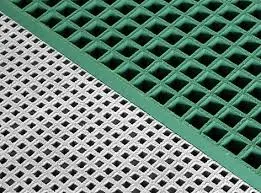
-
 Afrikaans
Afrikaans -
 Albanian
Albanian -
 Amharic
Amharic -
 Arabic
Arabic -
 Armenian
Armenian -
 Azerbaijani
Azerbaijani -
 Basque
Basque -
 Belarusian
Belarusian -
 Bengali
Bengali -
 Bosnian
Bosnian -
 Bulgarian
Bulgarian -
 Catalan
Catalan -
 Cebuano
Cebuano -
 China
China -
 China (Taiwan)
China (Taiwan) -
 Corsican
Corsican -
 Croatian
Croatian -
 Czech
Czech -
 Danish
Danish -
 Dutch
Dutch -
 English
English -
 Esperanto
Esperanto -
 Estonian
Estonian -
 Finnish
Finnish -
 French
French -
 Frisian
Frisian -
 Galician
Galician -
 Georgian
Georgian -
 German
German -
 Greek
Greek -
 Gujarati
Gujarati -
 Haitian Creole
Haitian Creole -
 hausa
hausa -
 hawaiian
hawaiian -
 Hebrew
Hebrew -
 Hindi
Hindi -
 Miao
Miao -
 Hungarian
Hungarian -
 Icelandic
Icelandic -
 igbo
igbo -
 Indonesian
Indonesian -
 irish
irish -
 Italian
Italian -
 Japanese
Japanese -
 Javanese
Javanese -
 Kannada
Kannada -
 kazakh
kazakh -
 Khmer
Khmer -
 Rwandese
Rwandese -
 Korean
Korean -
 Kurdish
Kurdish -
 Kyrgyz
Kyrgyz -
 Lao
Lao -
 Latin
Latin -
 Latvian
Latvian -
 Lithuanian
Lithuanian -
 Luxembourgish
Luxembourgish -
 Macedonian
Macedonian -
 Malgashi
Malgashi -
 Malay
Malay -
 Malayalam
Malayalam -
 Maltese
Maltese -
 Maori
Maori -
 Marathi
Marathi -
 Mongolian
Mongolian -
 Myanmar
Myanmar -
 Nepali
Nepali -
 Norwegian
Norwegian -
 Norwegian
Norwegian -
 Occitan
Occitan -
 Pashto
Pashto -
 Persian
Persian -
 Polish
Polish -
 Portuguese
Portuguese -
 Punjabi
Punjabi -
 Romanian
Romanian -
 Russian
Russian -
 Samoan
Samoan -
 Scottish Gaelic
Scottish Gaelic -
 Serbian
Serbian -
 Sesotho
Sesotho -
 Shona
Shona -
 Sindhi
Sindhi -
 Sinhala
Sinhala -
 Slovak
Slovak -
 Slovenian
Slovenian -
 Somali
Somali -
 Spanish
Spanish -
 Sundanese
Sundanese -
 Swahili
Swahili -
 Swedish
Swedish -
 Tagalog
Tagalog -
 Tajik
Tajik -
 Tamil
Tamil -
 Tatar
Tatar -
 Telugu
Telugu -
 Thai
Thai -
 Turkish
Turkish -
 Turkmen
Turkmen -
 Ukrainian
Ukrainian -
 Urdu
Urdu -
 Uighur
Uighur -
 Uzbek
Uzbek -
 Vietnamese
Vietnamese -
 Welsh
Welsh -
 Bantu
Bantu -
 Yiddish
Yiddish -
 Yoruba
Yoruba -
 Zulu
Zulu
Fiberglass 90 Degree Elbow Specifications and Applications for Piping Systems
Understanding Fiberglass 90 Degree Elbows A Comprehensive Overview
Fiberglass has become a widely embraced material in various industries due to its remarkable properties, including resistance to corrosion, light weight, and high tensile strength. Among the many components made from fiberglass, the 90-degree elbow stands out as a crucial fitting in piping systems. This article delves into the significance, applications, manufacturing processes, and advantages of fiberglass 90-degree elbows.
What is a Fiberglass 90 Degree Elbow?
A fiberglass 90-degree elbow is a type of pipe fitting that is used to create a sharp change in direction within a piping system. As the name suggests, it changes the flow direction of liquids or gases by 90 degrees. These elbows are essential in plumbing, HVAC systems, chemical processing, and various other applications where precise flow control is required.
Applications of Fiberglass 90 Degree Elbows
The versatility of fiberglass 90-degree elbows allows for their use in several settings
1. Chemical Processing Fiberglass offers exceptional resistance against aggressive chemicals. In industries involving the transport of corrosive substances, fiberglass elbows ensure safety and longevity of the piping infrastructure.
2. Water Treatment Facilities These elbows are ideal for use in water treatment applications due to their rust-resistant properties, helping to maintain the integrity of the system over time.
3. Marine Applications In marine environments, fiberglass elbows prove valuable as they can withstand harsh conditions, including saltwater and exposure to UV rays.
4. HVAC Systems In heating, ventilation, and air conditioning systems, fiberglass elbows are used to guide airflow efficiently, contributing to the overall functionality of the system.
Manufacturing Process
The manufacturing of fiberglass 90-degree elbows typically involves a process known as filament winding or hand lay-up. Here’s a brief overview of the steps involved
1. Material Preparation The main materials used in the production are fiberglass strands and resin. The chosen resin plays a critical role, as it dictates the chemical resistance and durability of the final product.
fiberglass 90 degree elbow

2. Molding The prepared fiberglass is shaped into the desired elbow configuration using molds that meet the specific dimensions required by the application.
3. Curing Once the molding process is complete, the fittings are subjected to a curing process, where the resin hardens and binds the fiberglass strands together, ensuring a robust and durable product.
4. Finishing After curing, the elbows may undergo additional finishing processes, such as sanding or coating, to enhance their surface quality and facilitate seamless installation.
Advantages of Fiberglass 90 Degree Elbows
Choosing fiberglass 90-degree elbows over traditional materials like metal or PVC comes with several benefits
1. Corrosion Resistance Fiberglass is inherently resistant to corrosion, making these elbows a reliable choice for transporting corrosive fluids without fear of degradation.
2. Lightweight Compared to metal fittings, fiberglass elbows are significantly lighter, which simplifies installation and reduces the overall weight of piping systems.
3. Durability Fiberglass elbows offer excellent tensile strength, enabling them to withstand high pressures and temperatures, thus prolonging their lifespan.
4. Thermal Insulation The insulating properties of fiberglass prevent heat loss in transport systems, enhancing energy efficiency.
5. Customizability Fiberglass elbows can be manufactured in various sizes, shapes, and degrees of bend, allowing for extensive customization to meet specific operational needs.
Conclusion
Fiberglass 90-degree elbows are an essential component in modern piping systems, providing a solution that balances strength, weight, and resistance to corrosive environments. Their versatility across numerous applications, combined with a robust manufacturing process, ensures that they remain a preferred choice for engineers and construction professionals alike. By understanding the advantages and applications of fiberglass elbows, industries can make informed decisions, leading to enhanced operational efficiency and reliability in their systems. Whether in a chemical plant or a water treatment facility, the role of fiberglass fittings cannot be understated, marking a significant advancement in piping technology.









